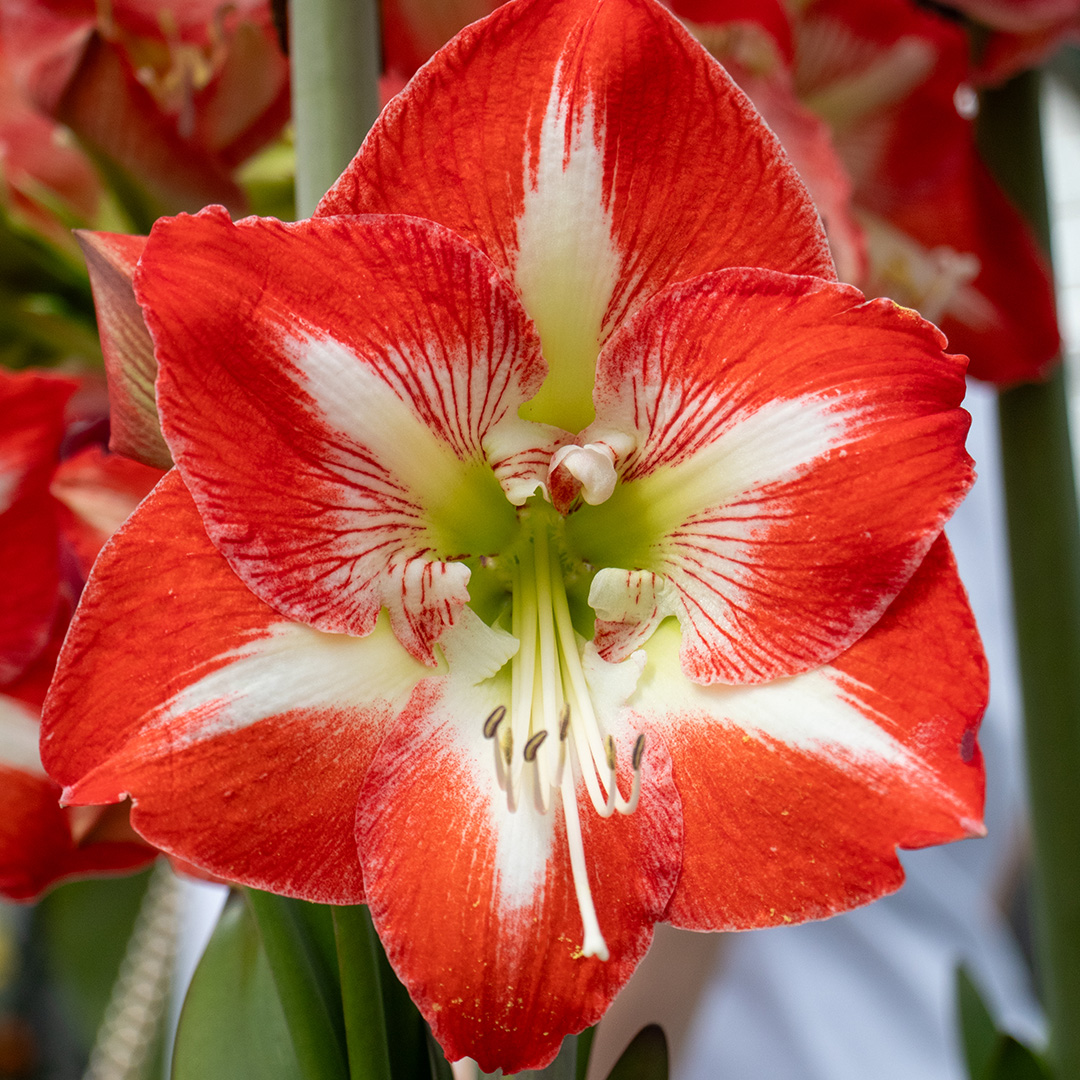
Amaryllis not flowering? Here's how you can get them to bloom!
The amaryllis (hippeastrum or knight's star) is a fascinating bulbous plant known for its beautiful, large flowers. But if your amaryllis doesn't flower or only produces green leaves, it can be frustrating. There are some possible causes and reasons for non-flowering and solutions to get your amaryllis blooming again. Is your amaryllis not flowering? Here's how you can get them to bloom:
When does an amaryllis actually flower?
One of the first things you need to know is when to expect the first amaryllis flowers. Amaryllis usually bloom in winter or spring, depending on the planting time and variety. Please note that the flowering time can vary, especially when different types are involved. The bulbs are then kept refrigerated by the supplier. The number of flowers and flower stems depends on the size of the bulb. The smallest sizes with a circumference of 22/24 cm often produce 1 flower stem with 4 flowers. The size with a circumference of 26/28 cm produces 2 flower stems. The flower stems flower one after the other. So if you choose a larger bulb size, you can enjoy your amaryllis for much longer. There are also jumbo amaryllises for sale that can reach a circumference of up to 40 cm or more, which can form up to 3 flower stems.
Amaryllis care: Too much or too little water?
Too little or too much watering can affect the flowering of the amaryllis. When caring for the amaryllis, make sure that you water the plant regularly but avoid waterlogging. Otherwise the roots may rot. Allow the soil to dry out a little between waterings before watering again. Also check whether your pot has drainage holes so that excess water can drain away. As soon as the amaryllis bulb starts to grow, it will need more water.
Autumn dormancy for new flowers
Many amaryllis varieties need a dormant period in autumn to flower properly. This means that the amaryllis bulbs are kept cool and dry at around 10-15 °C for 6-8 weeks. During this time, the bulb plant slows down its growth, but at the same time prepares for flowering. The new flower is formed in the centre of the bulb and is not visible from the outside. Make sure that you water less during this dormant period to prevent rotting. If this cold period is not observed, only leaves will form. The amaryllis you buy from QFB Gardening has already passed this cold period. They can be planted in a pot immediately upon receipt and placed at ± 20°C. Growth is slow at first. As soon as the flower has grown above the bulb, growth is rapid. The flower can grow up to 2-3 cm per day.
Right location - beautiful bloom
The amaryllis is a houseplant and needs a bright location to flower. Make sure that it receives sufficient but not direct sunlight, preferably at least four hours a day, but not in full sun. A south or west-facing window is usually ideal. A location that is too dark can affect the flowering. The flower will then grow towards the light. Turn the pot regularly so that the flower grows straight.
The right temperature for a subtropical plant
The room temperature also plays an important role in the flowering of amaryllis bulb plants. Place the plant in a room with an average room temperature of 20-25 °C, but avoid extreme heat or draughts. Sudden changes in temperature can affect bud formation. If you keep the amaryllis cool, it will grow more slowly and become larger.
Sufficient sunlight
The amaryllis is a subtropical plant and needs a bright location to flower. Make sure it gets enough indirect sunlight, preferably at least four hours a day. A south or west-facing window is usually ideal. A location that is too dark can impair flowering. If your plant does not get enough sunlight, you should provide it with additional artificial light. Use special plant lamps that you place directly above the plant. Just make sure that the plant does not overheat.
Finally, it is important to be patient. In some cases, the amaryllis simply needs more time to flower. Check all the above points again and give the plant enough time to recover and produce new flowers.



